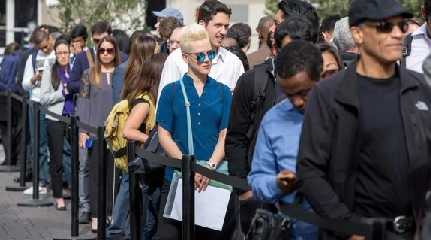
WASHINGTON (AP) — America’s employers shrugged off high inflation and weakening growth to add 372,000 jobs in June, a surprisingly strong gain that will likely spur the Federal Reserve to keep sharply raising interest rates to cool the economy and slow price increases.
The unemployment rate remained at 3.6% for a fourth straight month, the government said Friday, matching a near-50-year low that was reached before the pandemic struck in early 2020.
The steadily robust pace of hiring shows that many businesses still want to add workers to meet high customer demand — a trend that should dispel concerns that the U.S. economy might be on the verge of a recession. With the nation gaining many additional jobs, more Americans are earning paychecks and are able to spend despite the highest inflation in four decades.
The past year’s streak of hiring has itself contributed to inflation and heightened pressure on the Fed to slow borrowing and spending. The central bank has already embarked on its fastest series of rate hikes since the 1980s. Additional large rate increases would making borrowing much costlier for consumers and businesses and increase the risk of a recession over the next year.
The Fed may regard the June job gain as evidence that the rapid pace of hiring is further feeding inflation as companies raise pay to attract workers and then increase prices to cover their higher labor costs. Many employers are still struggling to fill jobs, especially in the economy’s vast service sector, with Americans now traveling, eating out and attending public events with much greater frequency.
Numerous sectors of the economy posted strong job gains in June: Health care added 78,000, transportation and warehousing 36,000 and professional services — a category that includes accounting, engineering, and legal services — gained 74,000.
Wages continued to grow in June, though at a slightly slower pace than they did earlier this year. More modest wage gains could help moderate inflation. Average hourly pay rose 5.1% to just above $32 last month, a much bigger increase than before the pandemic though not enough to keep pace with inflation. Wage growth is down from a 6% pace late last year.
The persistent desire of many businesses to hire and grow is providing a bulwark against the likelihood that the economy will tip into recession. Even if a downturn does occur over the next year, the healthy job and pay growth of the past year could help keep it relatively brief and mild.
For now, there are roughly two posted job openings for every unemployed worker. And the number of people seeking unemployment benefits — a proxy for layoffs and an early indicator of a downturn — remains far below historic averages, although it has ticked up recently.
At the same time, economic growth has likely been negative for two straight quarters, consumers are slowing their spending with inflation at a four-decade high and home sales have fallen as the Fed has jacked up borrowing costs.
And hiring could weaken in the coming months as the Fed’s rate cuts increasingly take effect. The Biden administration, too, has sought to portray any pullback in hiring as part of a welcome transition to a more sustainable economy that will help keep inflation down.
The transition to a more sustainable pace of growth and hiring, though, is likely to be a bumpy one. Already, signs of a slowdown are evident. In May, consumer spending, adjusted for inflation, fell for the first time since December. Sales of existing homes have fallen nearly 9% compared with a year ago.
And some companies are announcing layoffs, or have paused hiring. In particular, several large retailers, including Walmart and Amazon, have said they over-hired during the pandemic, with Walmart reducing its headcount by attrition.
Tesla is cutting about 3.5% of its total headcount. Netflix has laid off about 450 employees after it reported losing subscribers for the first time in more than a decade. The online automotive retailer Carvana and real estate companies Redfin and Compass have also announced job cuts.
Fed Chair Jerome Powell has held out hope that the economy will continue to expand even as the central bank raises borrowing costs at its fastest pace since the late 1980s. But Powell has also acknowledged that overseas factors, such as Russia’s invasion of Ukraine, which has elevated gas and food prices, will make it difficult to avoid a recession.
Last month, he conceded that a recession “is not our intended outcome but it’s certainly a possibility.”
The job market’s recovery has been much more rapid after the pandemic recession than previous downturns. The economy has now recovered all the private-sector jobs lost to the pandemic, a little over two years after the recession. It took almost five years to reach that level after the 2008-2009 downturn.




